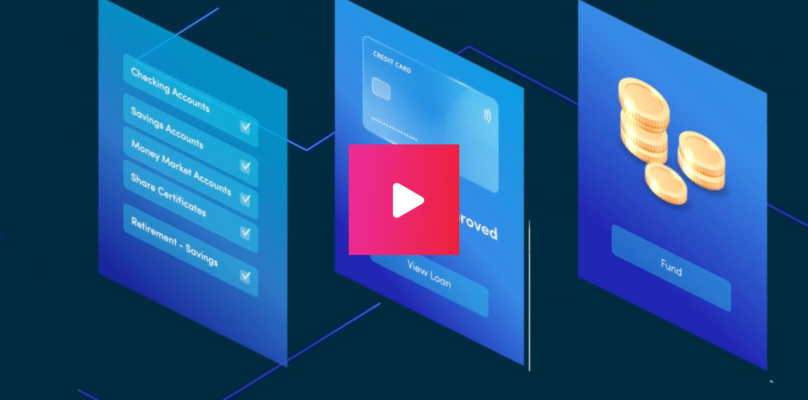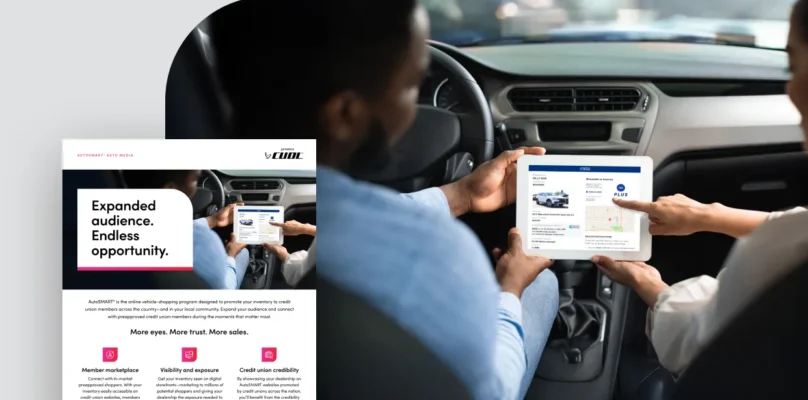Seamless, simple, and clean—that’s the formula driving success in embedded financing. During a recent webinar led by Brian Hamilton, Origence’s head of embedded lending, credit union leaders explored the strategic value of integrating their financial services into everyday experiences. They also walked away with actionable insights to help meet the evolving expectations of today’s consumers.
Credit unions have long led the way in member service. However, since 2018, banks have edged ahead in customer satisfaction—not because of a shift in values, but because they’ve moved faster to deliver the fintech experiences consumers now expect. Hamilton pointed to recent surveys showing that a majority of younger consumers are willing to switch providers just to access embedded financial services. These solutions enhance the member experience, increase lifetime value, and strengthen brand loyalty. With embedded finance projected to generate more than $45B in revenue over the next decade, the opportunity for credit unions is clear.
Look at your Amazon account or your Starbucks app—payments are often set up before you even think about making a purchase. When your member orders a latte, is your credit union’s card tied to their phone app? Today’s consumers typically have an average of seven financial apps available to them on their mobile devices at any given time. The era of seeking financing approval before shopping is quickly fading.
Credit unions looking to grow their point-of-sale financing should explore partnerships with non-financial platforms. These efforts require cloud-based systems and API integrations.
To move from strategy to action, here are several key considerations:
- Prioritize a user-friendly interface and seamless experience.
- Recognize that technology advances and new processes will require you to ramp up data security protocols and risk management sophistication.
- Implement a required monetization strategy to drive the profitability necessary for perpetual innovation.
- Develop your go-to-market strategy.
The fastest way to enter this market is wholesale purchase of originations, requiring little to no investment or technology build-out. Average return on assets for this model is in the 3-5% range. If a credit union chooses to be more engaged in the origination process–whether by purchasing or licensing an existing platform, or building solutions directly with the merchant—the challenges and risks grow, as do the returns. Credit unions are strongly encouraged to solve these concerns with partnerships and aggregators rather than trying to reinvent the wheel internally.
While it is true that 7 out of 10 auto loan financing decisions remain at the dealership, that dynamic is changing rapidly. You can buy a new Hyundai or used Hertz automobile from Amazon today in several geographic markets. Consumers increasingly expect the financing process to be seamless, simple, and clean. Once the car is chosen, they want no further uncertainty or delays with loan approval.
Tesla’s unique buying experience led Origence’s FI Connect to reimagine its business processes when building an embedded financing program. Their success highlights the innovation needed to meet high consumer expectations. Speed is key in embedded lending. Instant decisions are rendered for 75% of Tesla buyers submitted to FI Connect, while manual decisions are returned in less than 7 minutes on average. Combined with the ability to deliver 24×7 service and real-time payment protocols that deliver proceeds to the seller right away, it’s clear why embedded financing is gaining traction with both consumers and retailers.
With advanced underwriting solutions and a sophisticated pricing model, FI Connect generated $1.15B in new loans in its first full year of operation. Additionally, FI Connect is able to verify member eligibility without exchanging nonpublic personal information and leverages a proprietary allocation engine to route loans to credit unions based on membership eligibility and lending capacity. Speed doesn’t come at the expense of quality or a balanced portfolio. As synthetic fraud and other security threats evolve, FI Connect stays ahead with advanced identity verification and adaptive fraud detection.
Credit unions partnering with FI Connect are capturing existing members and growing new membership with seamless, straightforward loan experience, while generating consistent new business from both existing and well-qualified new members. Auto loans may have led the way in embedded financing, but other products and services are quickly following.
The home improvement industry, like many others, has seen rapid consolidation. Local construction firms are increasingly joining regional and national players, often keeping their original brand and teams intact. These larger organizations understand that embedded financing helps close more deals. Credit unions are familiar with the indirect auto lending model, where dealerships are compensated for originating loans. Now, flip that model: home improvement companies may help offset the cost of originating credit union loans to offer built-in financing for homeowners investing in kitchens, bathrooms, siding, windows, and other major upgrades. When “how will we pay for this?” is the biggest barrier to a sale, solving for it upfront becomes a smart business move.
The way consumers pay for products and services is changing. Forward-thinking credit unions recognize this shift as a chance to compete more effectively, regardless of asset size. With the right partnerships and a progressive mindset, embedded financing can help credit unions meet rising consumer expectations for fast, frictionless financial experiences.


















